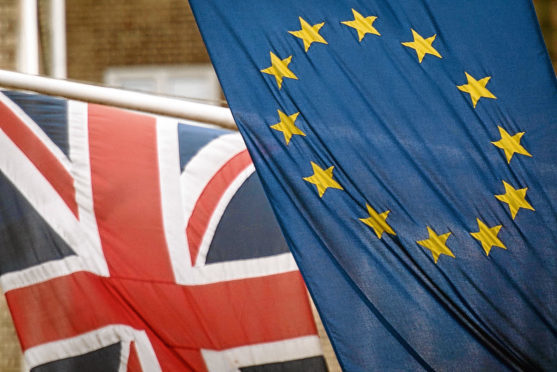All nationalisms romanticise the past. That includes the nationalism fuelling the drive for Brexit. Whether this nationalism is British or English in inspiration isn’t clear. But what’s certain is that talk of long-gone glories has been integral to the Brexit project from the start.
Sometimes the era that’s recalled is that of the Empire – those centuries when Britannia ruled the waves and when the Union Jack fluttered over extensive territories on every continent.
But what’s most lovingly lingered over in pro-Brexit circles is a much shorter period – the 12 or so months, starting in the summer of 1940, when Britain “stood alone” against the genocidal tyranny that was Nazi Germany.
That there was heroism in Britain’s 1940 stance is beyond argument. But there’s something perverse in the notion that the experiences of nearly 80 years ago add to the case for pulling out of the European Union today. If anything, they make that case look dangerously delusional.
It isn’t, of course, true that Britain was “alone” in 1940. Standing alongside the UK, as they’d done since war broke out the year before, were self-governing dominions, as they were then called, like Australia and Canada. Colonies such as India were a source of vital manpower. And contributing hugely to Britain’s battle for survival were people who’d fled countries the Nazis had already subjugated – perhaps most famously the many Polish pilots who served with the RAF.
But that is neither here nor there in comparison with the biggest stumbling block in the way of seeking Brexit comfort in the 1940 story. This lies in the fact that Brexit is wholly a matter of choice. The position in which the UK found itself in June 1940, in contrast, was one the country had striven mightily to avoid.
Insofar as Britain stood alone that summer, it did so because of the catastrophic defeats that had been inflicted on its forces, first in Norway and then, more disastrously still, in France. Because of these reverses, Britain’s armies had been expelled from continental Europe and the country left – the dominions aside – without allies or partners.
Its consequent isolation, however much it might be celebrated in retrospect, was no cause of celebration at the time. Unless that isolation could be ended, everyone in Britain recognised, the country would be unlikely to win its war with Hitler’s Germany. Indeed its own continued existence as a free and independent state would be highly problematic.
Nobody was more aware of this than Winston Churchill, who became prime minister at a point when the military situation was going from bad to calamitous. The one chink of light in the otherwise all-enveloping gloom was the rescue of much of Britain’s Army from Dunkirk. But wars, as Churchill remarked, are not won by evacuations. And even if the UK avoided invasion, a very big if in the summer of 1940, there was only one way, as Churchill well knew, that Britain could hope to win through to victory. That was by finding allies capable of inflicting on Nazi Germany defeats of a sort that Britain, by itself, could not hope to bring about.
Hence the effort Churchill put into courting the United States and its president, Franklin D Roosevelt. But Roosevelt, while personally well disposed to Britain, was hamstrung by congressional and other opposition to US intervention in the war – opposition that mustered under the slogan of “America First”. Military and other supplies were made available to the UK – at a price. But sending soldiers into conflict was ruled out.
What altered this state of affairs and made Britain’s war winnable were two key developments. One was Germany’s June 1941 invasion of the Soviet Union. The other was Japan’s December 1941 attack on the US fleet at Pearl Harbour. Those events brought to Britain’s side not just America’s immense strength but the tremendous fighting capabilities of Russia’s Red Army – an army which, after many initial setbacks, did more than any other to bring about Germany’s eventual capitulation.
But though the war with Germany was won, it was won in a way that left much of Europe subject to Soviet domination not markedly preferable to the Nazi domination that had gone before. That is why post-war British governments, fearful of Soviet power and mindful of the horrors of 1940-type isolation, put so much effort into keeping the US engaged internationally – while simultaneously constructing all sorts of partnerships and alliances in which our country took a leading role.
That was then. Now Brexit Britain is set on going its own way. It is doing so just as Vladimir Putin’s Russia is intent on fostering European disunity and Donald Trump’s US – the slogan of America First again to the fore – aims to extricate itself from international obligations. Is it sensible, in this context, for Britain – relatively much weaker militarily and economically than the Britain of 80 years back – to be to be pursuing such a course? Not if one heeds the lessons of 1940. When forced to stand alone, we were more vulnerable, more imperilled, more at the mercy of others than we’d ever been before.
Jim Hunter is a historian, award-winning author and Emeritus Professor of History at the University of the Highlands and Islands










